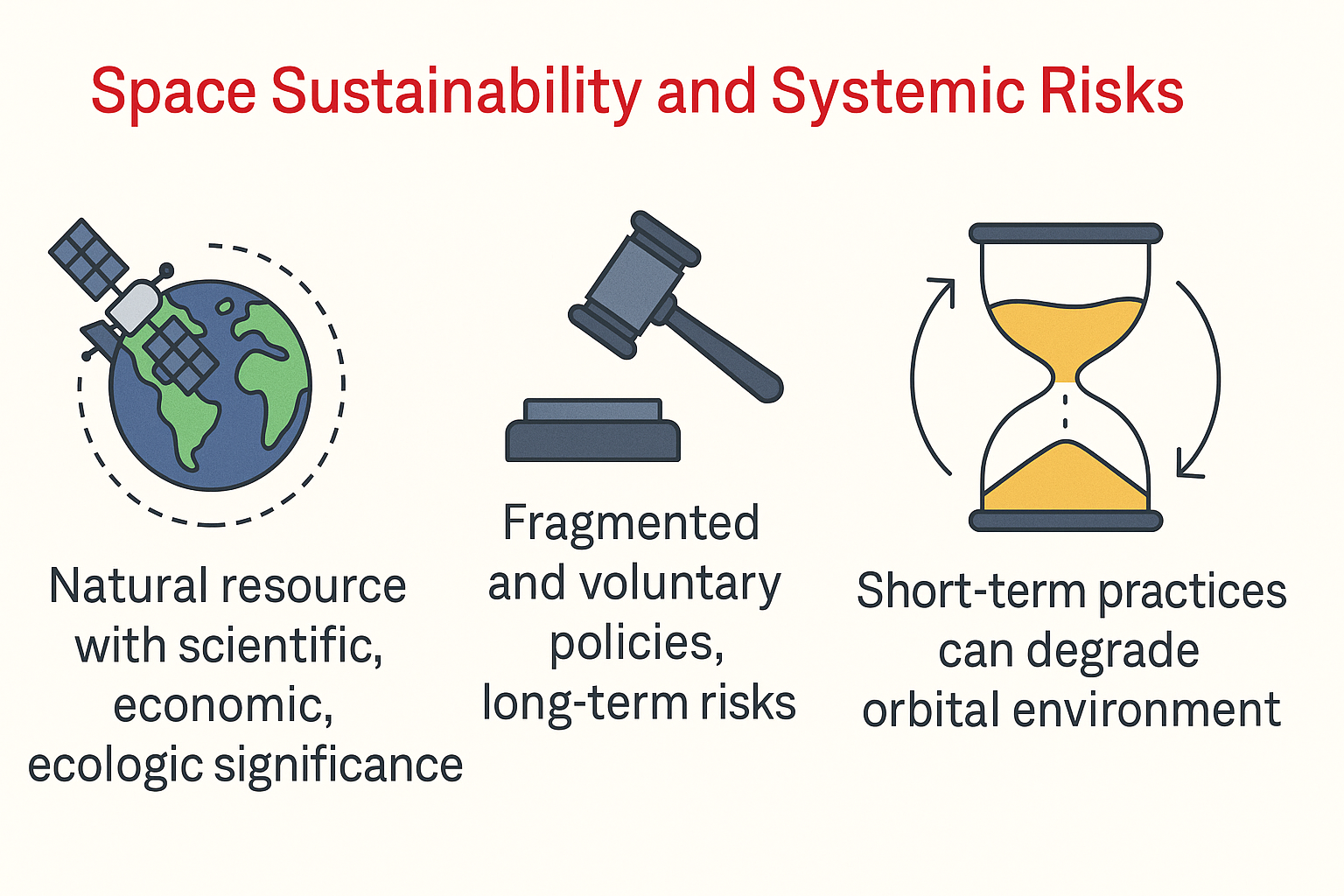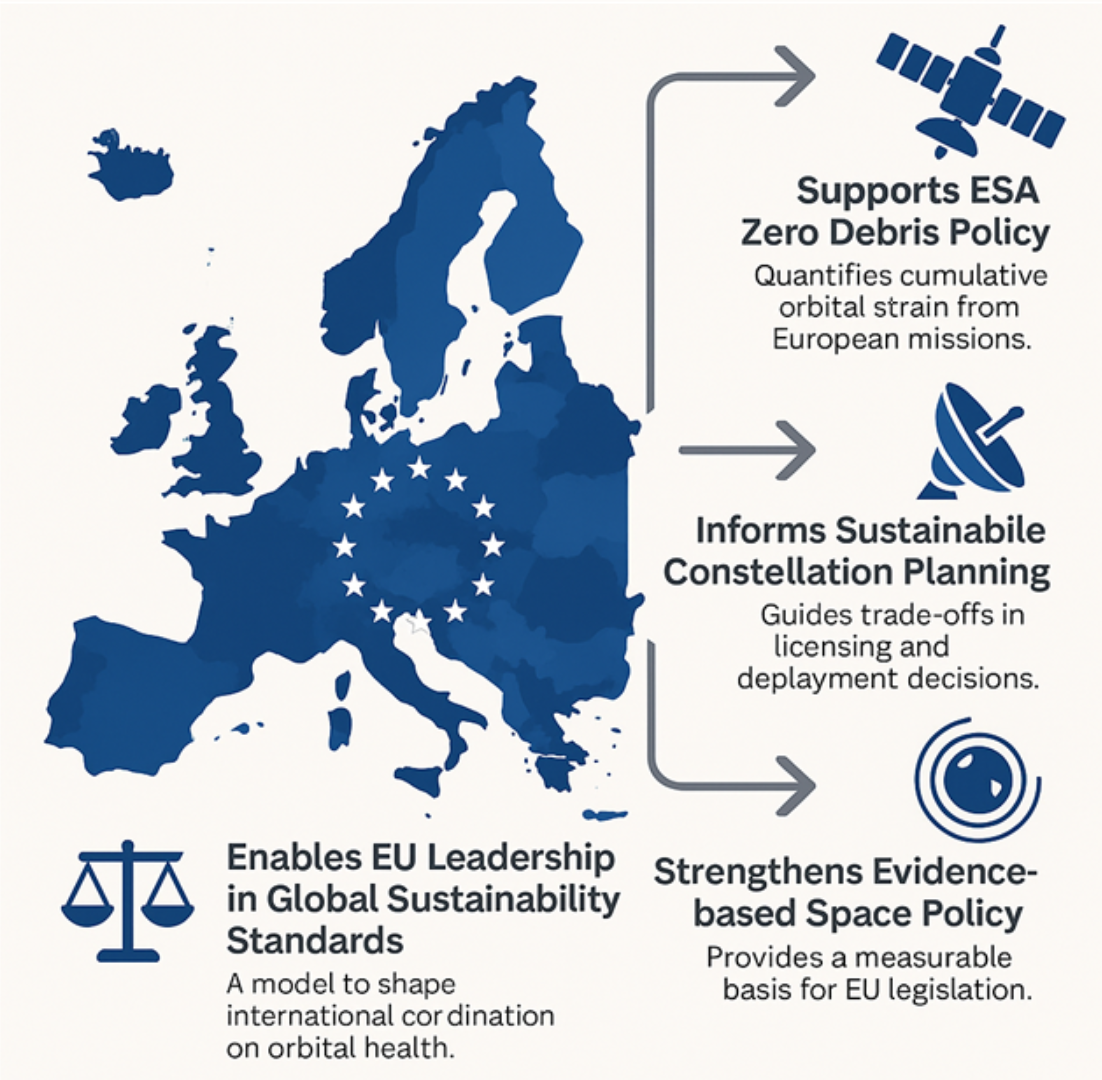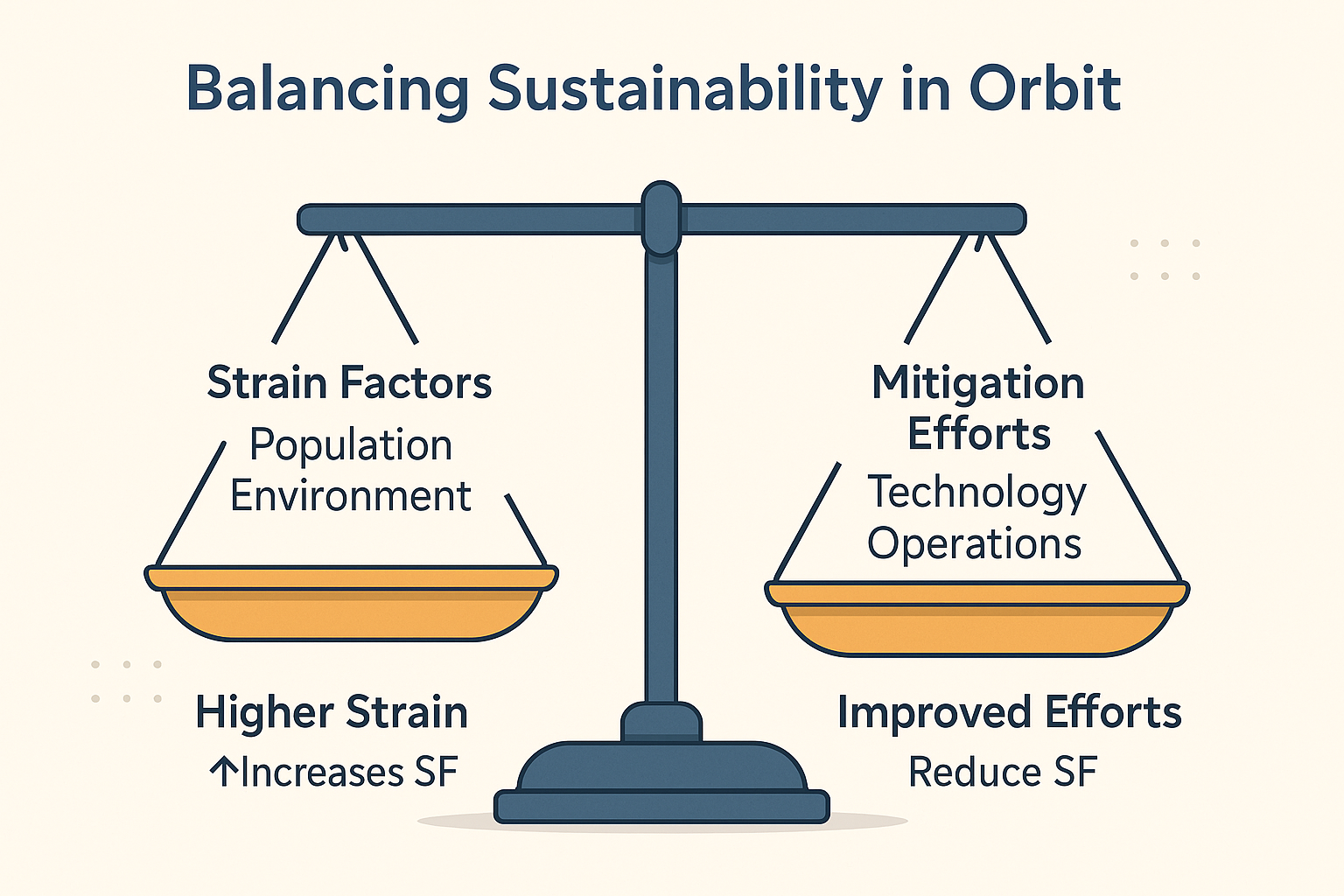Sustainability & Impact Modeling
Space Footprint Project
The Space Footprint model introduces a dynamic, impact-based indicator that quantifies the evolving sustainability of Earth’s orbital environment. Unlike traditional threshold models, it captures the complex interplay of orbital congestion, environmental forces, mitigation technologies, and operational practices. By providing a time-sensitive, data-driven measure of cumulative human impact in space, the model enables proactive traffic management, sustainable constellation planning, and evidence-based policy-making. Designed for scalability and real-world application, the Space Footprint advances global efforts toward responsible space stewardship.
Problem Statement
The rapid expansion of satellite constellations and orbital debris has surpassed the capacity of traditional sustainability models,
which typically rely on static thresholds or fixed population limits. These approaches fail to account for the dynamic, cumulative, and systemic nature of orbital strain. In the absence of a predictive, impact-based indicator, space sustainability remains reactive—threatening the long-term stability and usability of orbital environments.

Systemic Risks to Space Sustainability. The orbital environment is a vital natural resource, yet current governance is fragmented
‘and largely voluntary. Short-term practices—if unchecked—can ‘accelerate long-term degradation, highlighting the need for stronger, impact-based sustainability measures
Introducing the Space Footprint
Footprint indicators — such as the carbon, water, and ecological footprints — have become essential tools in sustainability
science by capturing the cumulative impact of human activity on Earth’s climate, ecosystems, and freshwater systems. Building on this legacy, the Space Footprint (SF) applies the same logic to orbital sustainability, offering a dynamic metric that quantifies how space operations alter the stability, safety, and usability of orbital regions over time.
Unlike static capacity-based models that define hard population limits, the Space Footprint reflects systemic strain and mitigating forces simultaneously. It accounts not just for how many objects are in orbit, but how their presence interacts with environmental factors, technological interventions, and operational behaviours.
By focusing on the evolving state of orbital environments, the SF. model provides a new lens through which to understand and manage the long-term consequences of satellite proliferation, debris accumulation, and governance choices — positioning sustainability in space as a dynamic, measurable, and policy- relevant concept.
Proposed Methodology
The Space Footprint moded is mathematically forumated as:
N = Population Size of space objects (satellites, debris),
A = Environmental influences (e.g., atmospheric drag, solar radiation pressure),
T = Technology factor (e.g., adoption and success of debris mitigation technologies),
O = Operational efficiency (e.g., collision avoidance practices, observation capabilities)
Each parameter contributes a multiplicative weight to the Space Footprint. High N, low T/O, and vulnerable A conditions result in elevated footprint scores
Expected Outcomes
- A dynamic indicator to monitor and predict orbital sustainability trends.
- A decision-support tool for space traffic management, constellation licensing, and regulatory frameworks.
- Potential integration with ESA’s MASTER and DISCOS systems for real-time sustainability monitoring.
- Advancement of Europe’s leadership in responsible space operations and sustainability innovation


Balancing Sustainability in Orbit. The Space Footprint (SF) model illustrates how orbital sustainability depends on the dynamic equilibrium between strain-inducing factors—such as satellite congestion and environmental persistence —and mitigating efforts, including debris removal technologies and coordinated ‘operations. As orbital activity accelerates, shifting this balance toward mitigation is essential for maintaining long-term safety, usability, and policy readiness sufficient to prevent long-term orbital degradation. It moves beyond static thresholds, offering a predictive, feedback-driven approach to managing orbital commons in a rapidly evolving space economy.
